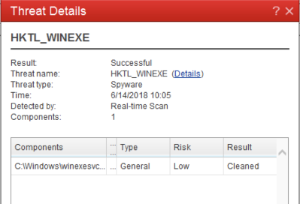| Table of Contents | ||||
|---|---|---|---|---|
|
The audit function of Open-AudIT is designed to work "out of the box" as much as possible with the default settings of target devices. Below are the requirements for the audit to work and some hints for items to configure when things are not working as planned.
How Does Open-AudIT Work?
Open-AudIT runs an Nmap discovery on each target IP address. Ope-AudIT scans the Nmap top 1000 TCP ports, as well as UDP 62078 (Apple IOS) and UDP 161 (SNMP). For Open-AudIT to consider a target IP to have a device responding, any of the Nmap Top 1000 TCP Ports must be responding or the UDP 62078. A target that responds to UDP 161 (SNMP) only and NO other ports (TCP or UDP 62078 / 161) is not considered to be responding.
...
| Info | ||
|---|---|---|
| ||
OA needs to see more than just UDP port 161 open on a device to consider it a legitimate device. If OA is only seeing UDP port 161 open OA will consider it a false positive and move on. If this is your situation you can edit the /usr/local/open-audit/other/discover_subnet.sh file and set consider_161_enough to “y" |
...
Windows
On Windows, Open-AudIT uses WMI via VBscript as it's primary method of auditing. SNMP is also supported (as detailed below). Windows has a notorious reputation where remote WMI is concerned. It tends to either "just work" or some mystery item on the target requires changing. If you are experiencing difficulty auditing remote Windows PCs, we have created a script called test_windows_client.vbs. You can run this script LOCALLY on the machine in question, after signing on as the user that is used by Open-AudIT to perform the audit. The script makes NO CHANGES to the target system. It checks most (not all) of the items below and generates PASS, FAIL and INFO tags for various properties. NOTE - If your target system is being audited correctly, you should not change any settings. Some of the below don't exist on Windows PCs that are able to be audited and some do exist. Only change settings if yours audits on particular PCs are not working as intended.
...
Another good Microsoft article, https://msdn.microsoft.com/en-us/library/aa826699%28v=vs.85%29.aspx?f=255&MSPPError=-2147217396
User Credentials Requirements
To audit a machine, you must have credentials and administrator level access.
...
| Code Block |
|---|
\HKEY_USERS\.DEFAULT\Software\Microsoft\Windows Script\Settings |
DCOM
Run the DCOM utility and verify (or set) the below attributes. Start -> Run, Enter DCOMCNFG and press OK. This will open the DCOMCNFG window.
...
The above changes will require a reboot to take effect.
UAC
If you are getting an Access Denied scan error it might be UAC blocking inbound requests on the remote device. If the remote computer you are trying to query is in a workgroup (or not joined to a domain), UAC prevents remote queries by default, even if the account being used is in the Administrators group. Completely disabling UAC on the remote device allows you to get around this, but it is preferable to disable the subcomponent of UAC instead. You can do this by adding or editing this registry key on the remote device you are scanning and setting its value to 1:
...
The above change will require a reboot to take effect.
Local Security Policies
Run one of the following three Microsoft Management Console (MMC) snap-ins:
...
The above changes will require a reboot to take effect.
Simple File Sharing (XP)
Windows XP Professional computers in a workgroup environment will need simple file sharing disabled. You can make this change through the registry by setting the following key to a value of 0.
...
The above changes will require a reboot to take effect.
WMI
Windows WMI (Windows Management Interface) is used by the audit script for most of it's information retrieval. WMI can (at times) become corrupted. Microsoft have released a tool to enable you to check for this corruption.
...
For Windows Core servers, ensure you allow the firewall connections as per - http://blogs.technet.com/b/brad_rutkowski/archive/2007/10/22/unable-to-remotely-manage-a-server-core-machine-mmc-wmi-device-manager.aspx
AntiVirus
Some antivirus programs have been known to disable DCOM and remote WMI. You might check the settings of your antivirus program and disable them for testing. We recently had a report of Trend AV specifically blocking calls to winexesvc when auditing Windows computers.
Windows Firewall
To enable remote PCs to be audited, either the local (on the target machines) firewall (likely the Windows Firewall) must be disabled or access allowed for the WMI service.
...
